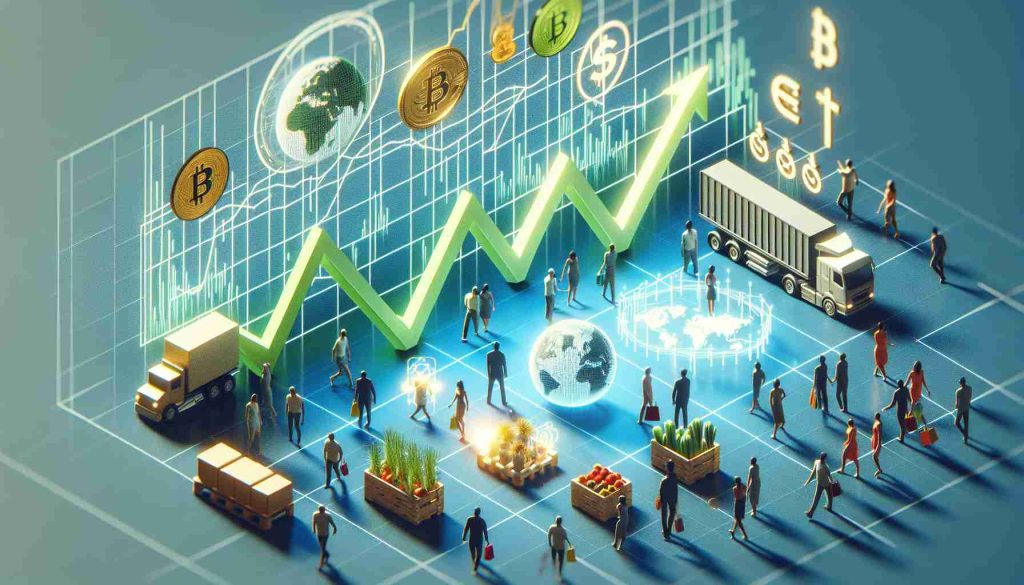Consumption Trends in a Changing Economy
A recent analysis has shown a 2.8% annual increase in the consumer price index, diverging from previous months with a 0.3% decrease. Notably, food inflation has plummeted, marking a shift from the previous upward trend. The core inflation rate, excluding energy and unprocessed foods, remained steady at 3.2%, hinting at a possible stabilization in the market dynamics.
Factors Influencing Consumer Behavior
Looking closely at the evolving consumption landscape, transportation costs saw a significant 1.8% drop, indicating a shift in travel priorities among consumers. On the other hand, housing-related expenses, particularly electricity prices, surged by 6%, reflecting changing patterns in energy consumption. The cost of olive oil continues to rise steeply, up by 30% year-over-year and a staggering 200% since 2021. However, some food items, such as alternative edible oils, have seen a decline in prices, showcasing a varied trend in consumer preferences.
Shifting Preferences in the Market
Apart from the food sector, other notable changes include a sharp increase in domestic airfares by 25.5%, while international flights experienced a dip of 7.4%. Similarly, mobile phone equipment and liquid fuels witnessed a decrease in prices, reflecting changes in technology adoption and energy consumption patterns.
Regional Disparities and Economic Implications
The inflation rates varied across regions, with the Basque Country showing the highest increase at 3% and Cantabria, Castilla y León, Castilla-La Mancha, and Murcia registering the lowest at 2.2%. This disparity underscores the diverse economic landscapes within the country. Additionally, the inflation rate for the European Central Bank’s price stability target of 2% poses both challenges and opportunities for economic policymakers in navigating these shifting consumer trends.
Emerging Factors Shaping Consumer Behavior
While the current analysis sheds light on significant trends, additional factors play a role in reshaping consumption patterns. One crucial aspect is the impact of technological advancements on e-commerce. Online shopping has surged in popularity, particularly during the global pandemic, influencing how consumers make purchasing decisions. The convenience and variety offered by online platforms have altered traditional shopping habits, with more individuals opting for digital transactions.
Innovations in Sustainable Consumption
A key consideration in modern consumption patterns is the increasing emphasis on sustainability. Consumers are becoming more conscious of the environmental impact of their choices, leading to a rise in demand for eco-friendly products and services. Companies are responding by adopting sustainable practices, from sourcing ethically produced goods to reducing carbon footprints. This shift reflects a growing awareness of the importance of responsible consumption in mitigating climate change and preserving natural resources.
Exploring the Rise of Subscription Services
Another notable trend reshaping consumption habits is the proliferation of subscription-based models across various industries. From streaming services to meal delivery kits, subscriptions offer convenience and tailored experiences to consumers. While this model provides ongoing revenue streams for businesses, it also raises questions about long-term commitment and potential overconsumption. Balancing the benefits of subscription services with the risk of excessive spending poses a challenge for both consumers and companies.
Key Questions and Challenges
1. How can businesses adapt to changing consumer preferences?
As consumption patterns evolve, companies face the challenge of staying relevant and meeting shifting demands. Understanding customer preferences, leveraging data analytics, and fostering innovation are crucial strategies for businesses aiming to thrive in dynamic markets.
2. What are the implications of sustainable consumption on economic growth?
While sustainability is gaining traction among consumers, implementing eco-friendly practices may entail higher production costs for businesses. Balancing environmental responsibility with financial viability poses a complex dilemma for companies seeking to maintain profitability while meeting societal expectations.
3. How can policymakers address regional economic disparities exacerbated by shifting consumption trends?
Differences in inflation rates across regions highlight the need for targeted economic policies to support areas facing challenges in adapting to changing consumer behaviors. Striking a balance between regional development initiatives and national economic strategies is essential for promoting inclusive growth and mitigating disparities.
Advantages and Disadvantages
Embracing new trends in consumption patterns presents both opportunities and risks for various stakeholders. The advantages include enhanced customer engagement, innovation potential, and sustainability gains. However, challenges such as market saturation, regulatory complexities, and ethical considerations pose obstacles to navigating shifting economic realities effectively.
For more insights on consumer behavior and economic trends, visit Economics Times.










More Stories
Game-Changer in Delivery! Glovo’s Bold Move Stuns Spain!
Maximizing Returns Beyond Treasury Bonds
Exploring the Rising Trends in European Banking